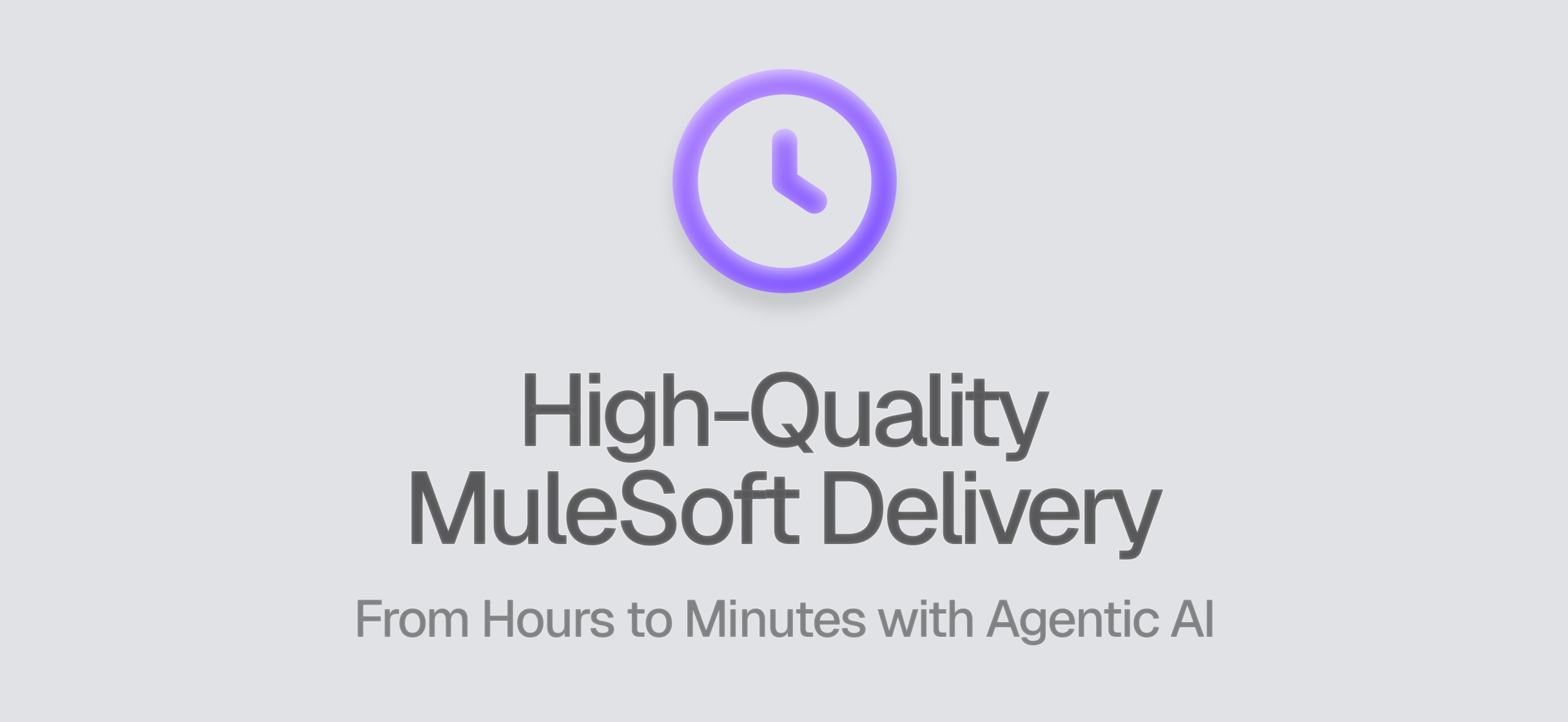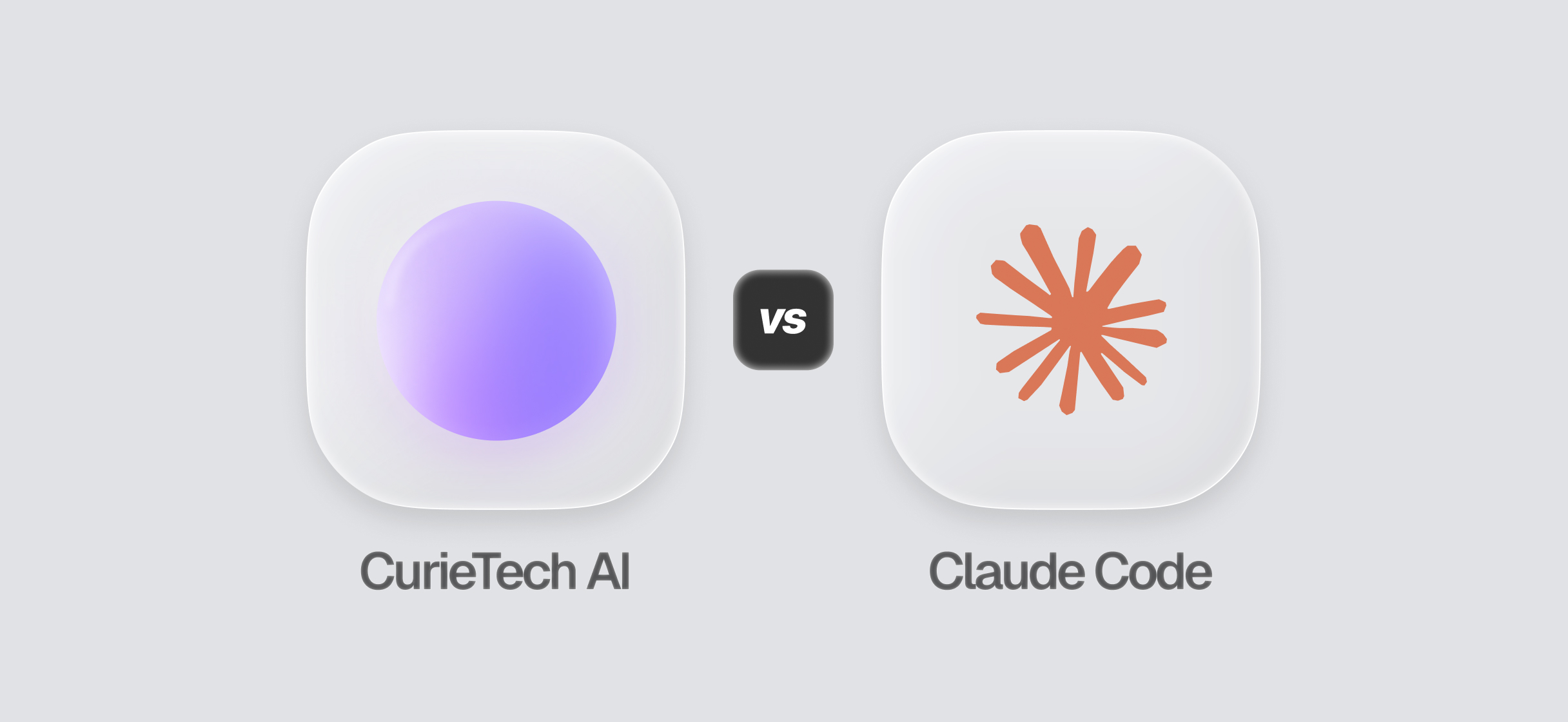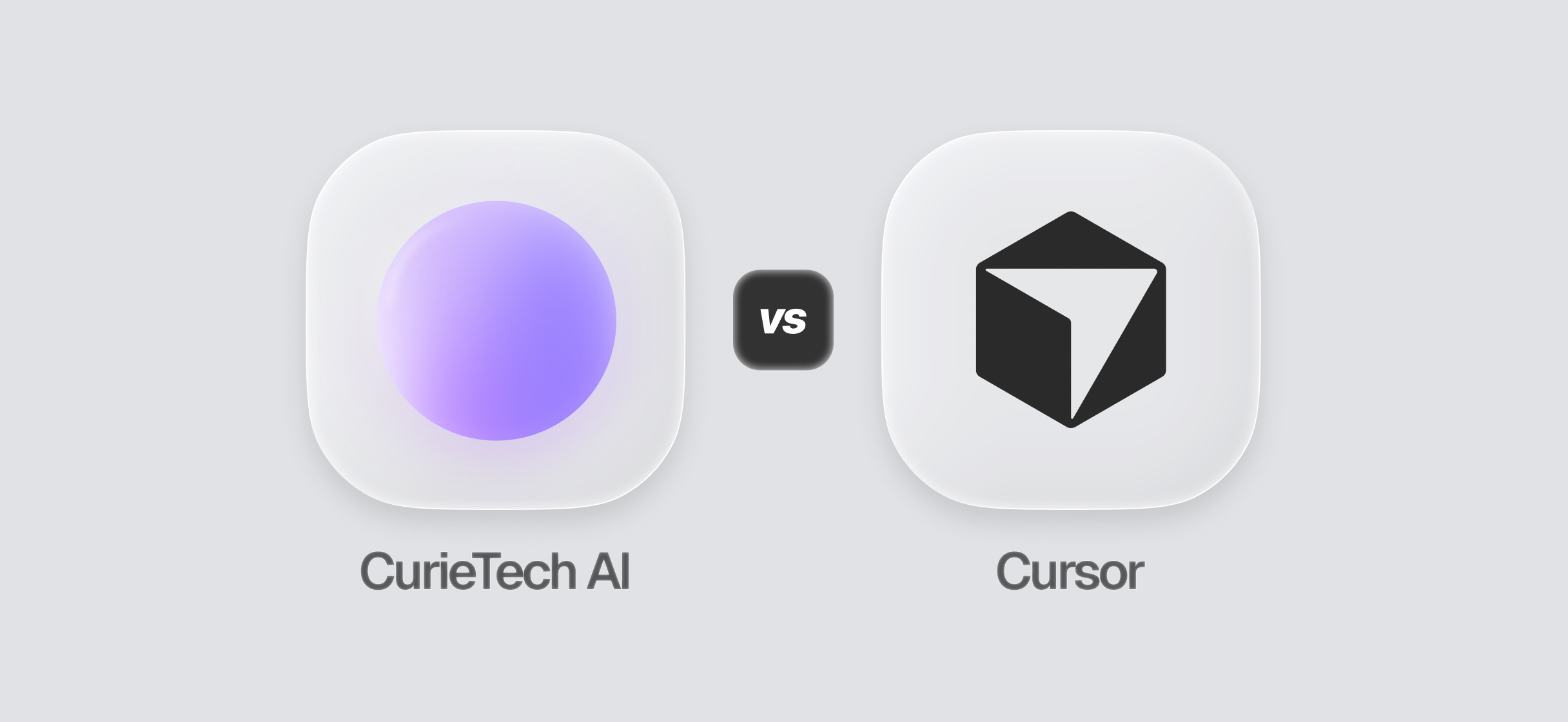How Agentic AI is Rewriting the Rules for MuleSoft Teams
Enterprise integration demands are rising fast. Organizations are expected to deliver more with agentic tools. Agentic AI has become the new norm. How can organizations leverage AI to achieve the velocity with quality they’re being asked for?
The benchmark study, “The Agentic AI Benchmark: How CurieTech AI and Cursor Stack Up for Integration Delivery,” shows that general-purpose AI tools like Cursor, GitHub Copilot and MuleSoft Dev agent deliver only ~32–43% first-time success on complex MuleSoft tasks, while specialized, purpose-built agents such as CurieTech AI achieve ~82% success.
That gap matters because every minute spent fixing generated code, rewriting tests, or waiting for peer reviews eats into velocity, inflates costs, and compromises quality.
What if developer workflows such as code generation, code review in CI/CD pipelines, and migration conversion could largely be automated while developers remain in the driver’s seat? What if the agent acted like a senior developer, not just a coding assistant taking on advanced tasks throughout the SDLC by writing production-ready code aligned to best practices, generating broad test coverage, enforcing reviews, and accelerating delivery?
CurieTech AI is a purpose-built AI designed for MuleSoft integration development. It enables organizations to shift their delivery model across the SDLC boosting developer productivity, driving cost savings, and delivering high-quality projects.
Below, we explore how three organizations adopted this model changing their delivery approach, compressing timelines, and unlocking ROI.
Case Study 1: Modernizing a Legacy Platform at Scale
A global manufacturing firm with over 200 B2B partners and multiple app-to-app interfaces faced a significant migration challenge. They needed to move from on-prem TIBCO to cloud-native MuleSoft, modernize service patterns, upgrade skill sets, and meet aggressive timelines.
How CurieTech AI transformed the delivery:
- AI-powered migration of legacy TIBCO integrations to MuleSoft
- Automated code conversion, including architectural modernization from uni-layered XML services to multi-layered, API-driven MuleSoft services
- A reusable framework for faster onboarding of new partners and endpoints
Results:
- Significant reduction in migration effort
- Lower project risk through AI-driven consistency, automation, and error reduction
- Internal teams upskilled quickly while working on the project
- Improved reusability and scalability of APIs post-migration
Case Study 2: Software Company Turbocharges MuleSoft Development
A financial software leader managing ~70 APIs with a three-person team was drowning in integration demands: manual flow creation, inconsistent documentation, and testing bottlenecks.
How CurieTech AI transformed the delivery:
- Generated production-ready code from complex specs in minutes instead of hours or days
- Generated advanced transformations from simple prompts, reducing errors and saving hours
- Made code review an integral and consistent part of the process
Results:
- 65% productivity gain — tasks that took 45 minutes now take 15
- Zero “hallucination” from AI output
- High-quality, organization best practices aligned code eliminated rework and reduced maintenance
Case Study 3: Small Team, Big Gains with Automated Reviews and Test Generation
Secil is a business group founded in Portugal whose activity is based on the production and sale of cement, concrete, aggregates, mortars and hydraulic lime. With only four developers supporting seven business units, code reviews and test generation was a major bottleneck.
How CurieTech AI transformed the delivery:
- Acted as a senior developer, reducing review wait time to near-zero
- The MUnit generation and validation agent cut test creation time by 50%
Results:
- Reduced total development cycle time
- Developers shifted focus from maintenance and review to strategic integration design
- Increased team satisfaction and throughput without adding headcount
Across the MuleSoft Delivery Model — From Weeks to Minutes
Whether your team is building new flows, maintaining existing code, or migrating legacy systems, CurieTech AI does the heavy lifting.
Coding Agents Embedded in Anypoint Studio
AI should be available where developers work today. CurieTech AI integrates directly into Anypoint Studio, allowing developers to work seamlessly.
Code Reviews in CI/CD Pipelines
Automate manual code reviews and make sure the code that aligns with organization best practices. Also perform code reviews in your CI/CD pipeline.
Broadest Test Coverage
Extensive test coverage ensures higher quality, reliability, and stability by catching bugs early, verifying requirements, and building confidence in code. CurieTech AI offers industry-leading test coverage.
Consumable and Precise Documentation
As they say, a picture is worth a thousand words. CurieTech AI generates clear, detailed documentation, including domain and sequence diagrams.
Senior Developer Role
CurieTech AI acts like a senior developer performing high value tasks that will elevate developer productivity across the development cycle.
What This Means for Technology Leaders
Time Compression
Using CurieTech AI, your project delivery timelines can shrink from days to hours.
Cost Compression
With Curie working alongside your developers, you can save over 50% on build, maintenance, and migration costs. Coding, review, and testing cycles shrink, allowing savings to be reinvested in new projects.
High Quality
As Curie ensures production-ready code, your developers regardless of skill level consistently deliver high-quality outputs.
Delivery Model Shift
As these improvements take hold, you’ll see your delivery model shift. Developers lead with strategy and oversight, while Curie executes high-value tasks shrinking cycles from months to weeks or days.
Conclusion
The age of manual flows, endless reviews, and slow migrations is ending. Agentic AI represents a paradigm shift: it delivers high-accuracy code, automates tasks end-to-end, integrates into pipelines, and transforms delivery models.
For technology leaders aiming to accelerate integrations, reduce cost, and raise quality—this is the path forward.
The question now isn’t whether to adopt AI in integration, but which AI to embrace.
The difference between general-purpose assistants and domain-specialized agents is real. The ROI is measurable, and the results are already evident across real-world implementations.



.jpg)

